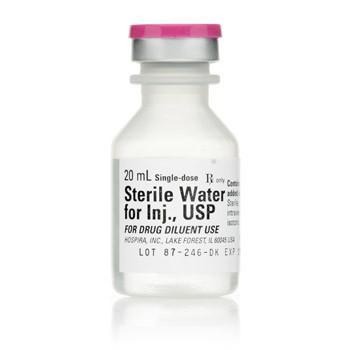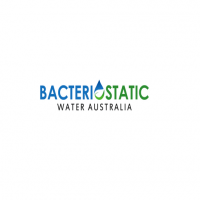Understanding the Body's Response: How Non-Sterile Water Affects Your Immune System

Strong 8k brings an ultra-HD IPTV experience to your living room and your pocket.
Water plays a vital role in medical procedures, especially when it comes to injections, wound care, and surgical preparation. However, the use of non sterile water in medical settings can pose serious health risks. Let's explore how the body responds to non-sterile substances, particularly focusing on the immune system’s reaction, potential allergic responses, and the risk of systemic infections.
Understanding these risks is essential to make informed decisions about why medical-grade solutions like Sterile Water for Injection and Sterile Water for Injection 10ml are recommended for safe use.
What is Non-Sterile Water?
Non-sterile water refers to water that has not been treated to eliminate all microorganisms, bacteria, fungi, and particulate matter. While it may appear clean to the naked eye, non-sterile water can carry pathogens that can enter the body and cause harm, especially if introduced through injections, open wounds, or sensitive body areas.
How the Body Reacts to Non-Sterile Substances
When non-sterile water enters the body—whether through injection, wound irrigation, or medical devices—the immune system identifies it as a threat. Here’s a breakdown of the body’s defence mechanisms:
1. Initial Immune Response: Innate Immunity
The body’s innate immune system is the first line of defence. It reacts rapidly to foreign substances:
White blood cells (neutrophils and macrophages) rush to the site to attack and destroy pathogens.
Inflammation occurs, causing redness, swelling, and sometimes fever.
The immune system may attempt to isolate the contaminated area to prevent the spread of harmful microorganisms.
If the immune system successfully neutralises the threat, symptoms may remain localised. However, if the contamination is significant, more severe responses follow.
2. Risk of Systemic Infections (Sepsis)
Non-sterile water can introduce dangerous bacteria like Pseudomonas aeruginosa, E. coli, or Staphylococcus aureus directly into the bloodstream or tissues. This can overwhelm the local immune response, leading to sepsis—a life-threatening condition where the infection spreads throughout the body.
Symptoms of Sepsis:
Rapid heartbeat
Fever or hypothermia
Confusion or disorientation
Shortness of breath
Low blood pressure
Sepsis requires immediate medical intervention and can lead to organ failure if untreated.
3. Delayed Allergic Reactions
Non-sterile water may also contain impurities, chemical residues, or bacterial endotoxins that trigger allergic reactions in sensitive individuals.
Allergic Reaction Symptoms:
Rash or hives
Itching
Swelling of the face, lips, or throat
Difficulty breathing (in severe cases)
Although less common than infections, allergic reactions can still be dangerous and are a key reason why only Sterile Water for Injection should be used in medical procedures.
Why Sterile Water for Injection is Essential
Key Features:
Sterile Water for Injection 10ml is specifically processed to remove all living microorganisms, endotoxins, and particulate matter.
It’s packaged in sealed, single-use ampoules to maintain sterility.
It’s the safest option for reconstituting medications, diluting drugs, and hydrating during medical procedures.
Using Sterile Water for Injection ensures that the risk of contamination is virtually eliminated, protecting the immune system from unnecessary threats.
Real-World Scenarios: Risks of Using Non-Sterile Water
1. Contaminated Injections
Using non-sterile water to dissolve medications can introduce bacteria directly into the bloodstream. There have been documented cases of bloodstream infections and abscess formation resulting from this unsafe practice.
2. Unsafe Wound Care
Irrigating wounds with non-sterile water can cause severe infections, particularly in patients with weakened immune systems. Sterile Water for Injection 10ml is preferred to ensure the wound remains free from harmful bacteria.
3. Improper Nebulisation
Using non-sterile water in nebulisers can lead to respiratory tract infections. Sterile water is always recommended for such uses to prevent lung infections.
Who is Most at Risk?
Immunocompromised Patients: Cancer patients, organ transplant recipients, and individuals with chronic illnesses are highly susceptible to infections from non-sterile substances.
Infants and Elderly: Both groups have less robust immune systems, making sterile practices even more crucial.
Post-Surgical Patients: Introducing non-sterile substances post-surgery can lead to wound infections and delayed healing.
Best Practices to Avoid Infection
Always Use Medical-Grade Sterile Water:
Products like Sterile Water for Injection are specifically designed to be free from contaminants.
Use Single-Use Ampoules:
Choosing Sterile Water for Injection 10ml minimizes wastage and maintains sterility.
Check Expiry Dates and Packaging:
Ensure the ampoule is intact and within its expiry date to guarantee its safety.
Never Substitute with Tap or Distilled Water:
Even distilled water is not suitable for injections or wound care as it may not be sterile.
Conclusion
The human body is remarkably efficient at defending itself, but it can only do so much when exposed to dangerous pathogens. Non-sterile water poses serious health risks that can overwhelm the immune system, leading to infections, allergic reactions, and life-threatening conditions like sepsis.
This is why Sterile Water for Injection and Sterile Water for Injection 10ml are the gold standards in medical care. They offer a controlled, safe solution that protects the body and supports effective treatment.
Choosing sterile solutions is not just a recommendation—it’s a crucial step in safeguarding health.
Frequently Asked Questions (FAQs)
1. Can I use distilled water instead of sterile water for injection?
No, distilled water is not sterile and should not be used for injections. Only Sterile Water for Injection is safe for such purposes.
2. What happens if non-sterile water is used for injection?
It can introduce bacteria into the bloodstream, causing infections, allergic reactions, or potentially life-threatening sepsis.
3. How long can I use Sterile Water for Injection after opening?
Sterile water should be used immediately after opening to maintain sterility. Discard any unused portion.
4. Is Sterile Water for Injection 10ml safe for wound cleaning?
Yes, it is specifically designed to be sterile and safe for wound care, injections, and medication reconstitution.
Looking to buy high-quality Sterile Water?
Explore safe and reliable options at Bacteriostatic Water Australia for Sterile Water for Injection 10ml and other sterile solutions.
Note: IndiBlogHub features both user-submitted and editorial content. We do not verify third-party contributions. Read our Disclaimer and Privacy Policyfor details.


